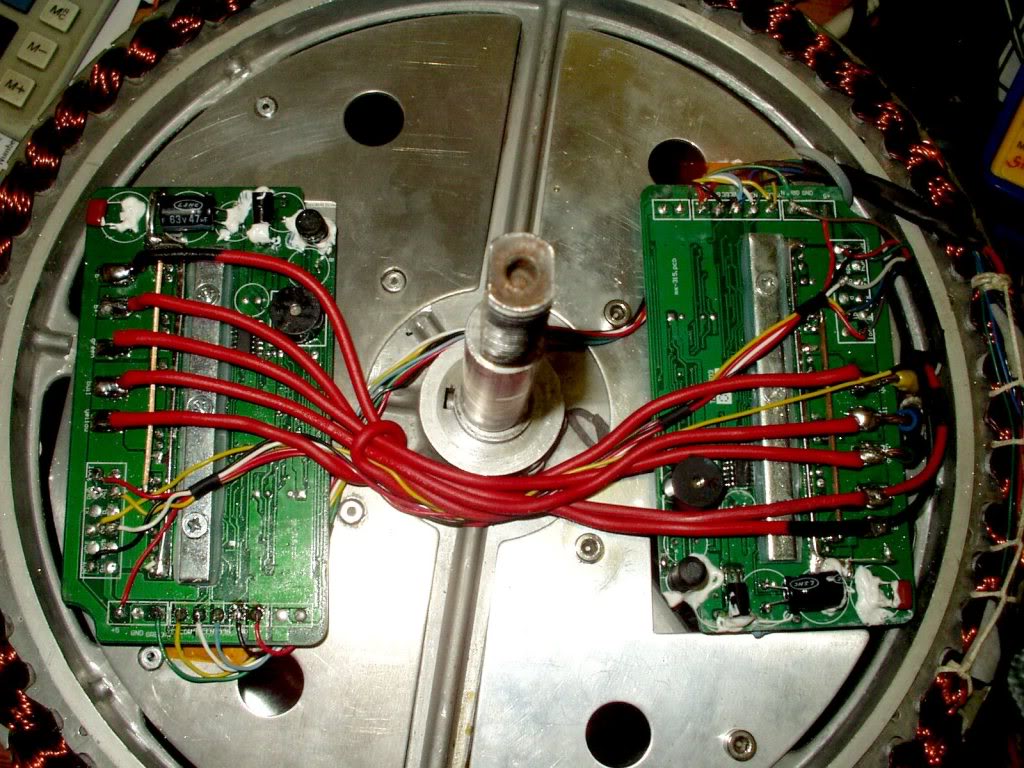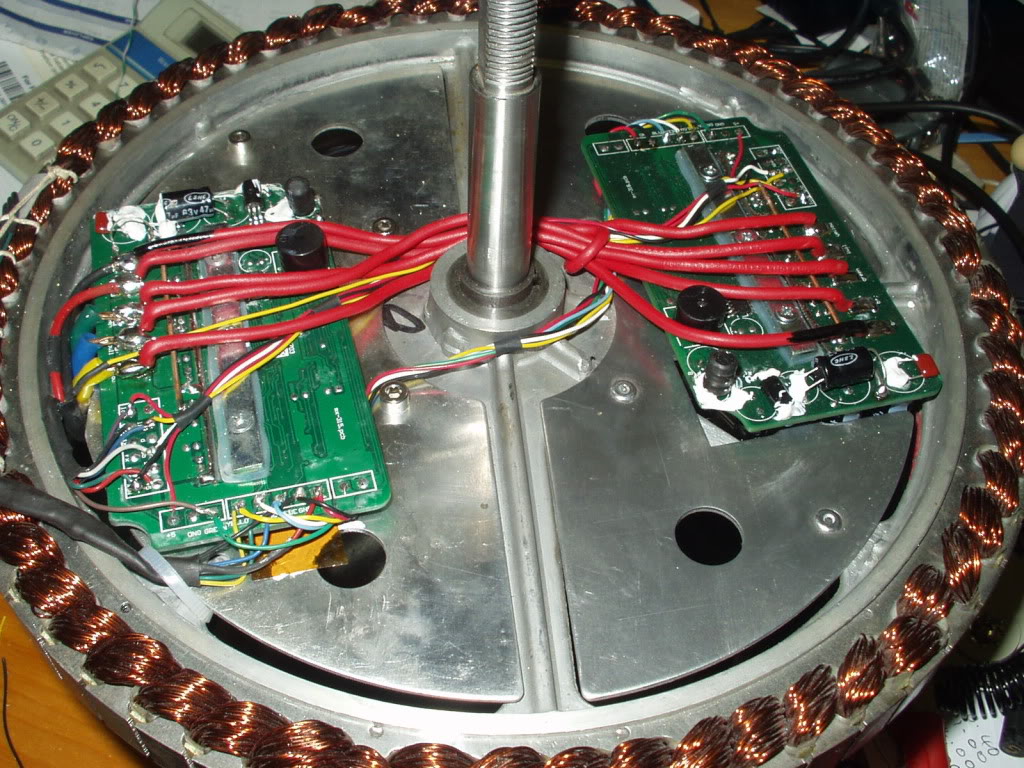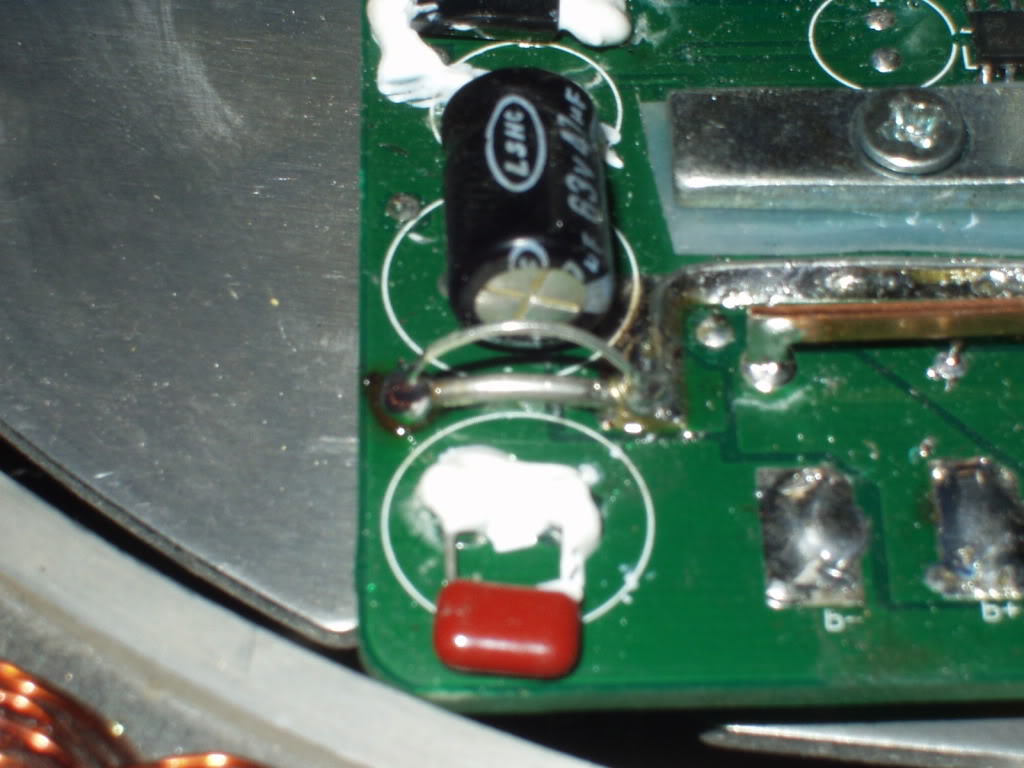Yesterday, I was finally able to complete the wiring, I'd like to say that the testing was a complete success and that it all went according to plan, but I can't, because it didn't.

Here are a couple of pictures of the completed wiring, which actually took much longer to do than I had expected:


I also added an additional loop of wire to each of the shunts to try and achieve nearer 25Amps max from each controller:

With the wiring completed, the wheel was quickly reassembled and refitted to the bike ready for testing. I eagerly connected the battery, producing a very loud crack accompanied by the anticipated bigger spark. But I had not expected this to be immediately followed by three beeps coming from the hub, indicating throttle failure. I quickly rechecked all external connections and even tried a spare throttle unit, but still three beeps. I then tried pressing the cruise button and the wheel instantly spun into life , which made me feel a bit more optimistic.
I carried out some simple checks with the voltmeter and discovered that I only had 0.5V instead of 5V coming from the throttle supply at the mini connector.
Unfortunately there was no way around it, the wheel had to come off again so I could access the internal wiring.
I removed the side cover and pulled the stator out for easier access and mounted it in the bench vice and reconnected the wires to the bike which was underneath it.
This time I heard just 2 beeps
(hall sensor failure) so I grabbed the voltmeter again and started checking voltages again. All three of the hall sensor outputs were reading around 4.6V, so I grabbed a magnet and tried moving it past each of the sensors, but the reading was still the same. I turned the magnet around and repeated the same process. This time, each of the sensor outputs went to 0V as the magnet came near to the respective sensor. So I deduced that the hall sensor failure warning had only occurred because the stator was not surrounded by the magnets.
Then I focused on finding the cause of the low throttle voltage, and a quick check with the meter showed 4.9V on the 5V throttle supply on both circuit boards.

So I rechecked the voltage at the external throttle connector, but for some strange reason this was also showing 4.9V.

Unable to find anything wrong with the wiring inside the hub, I reassembled the wheel and decided I'd test it in the vice first. Connected the wires and no beeps whatsoever, so I anxiously tried twisting the throttle and the wheel started to run properly.

I then refitted it to the bike again so I could take it for a quick spin, as I was taping the wires to the frame to keep them away from the tyre, I heard the dreaded three beeps again

but at least I now knew what was causing the fault - a poor connection in the main junction block on the Pie's harness! Not wanting to strip this apart, I moved the block slightly so it was pushing slightly onto the cable instead of pulling, which seemed to cure the problem.
The moment of truth had finally arrived and it was time to test out all my hard work. I took the bike for a quick spin around the back garden and it definitely seemed to pull me up the slope much easier than before. I checked my watt meter, and this confirmed my thoughts by showing the highest reading I've ever had of
1340Watts, but still not quite as much as I had hoped for.
I continued to test the motor and made it work as hard as I could in an effort to get a higher reading, but this did not happen. The motor did eventually get slightly warmer than it had before, but definitely not hot. After a few more tests, I noticed that the throttle would not work unless the bike was moving, and the noise from the motor had become slightly more harsh. I disconnected the battery and then reconnected it, only to hear two beeps
(hall sensor failure) 
but as I was running out of time, I had to put the bike away and go to work.
Today, I decided to try the bike again so I could see what it was like from cold, but unfortunately I still received the two beeps. I pedalled the bike and twisted the throttle and received a slight nudge from the motor, followed by the dreaded sound of
five beeps and a wheel which is now lumpy to turn, indicating the death of a controller, or more likely both of them knowing my luck!
I don't have the enthusiasm to start pulling it all apart again now, so the post mortem will have to be done at a later date.
But at least this experiment has provided an answer to my original question, "Can Two controllers be used to power a single motor?" , the answer is yes, but unfortunately I would not recommend it because it probably will not work for very long!

I think an external controller conversion may well be happening if both controllers are found to be dead.
Alan